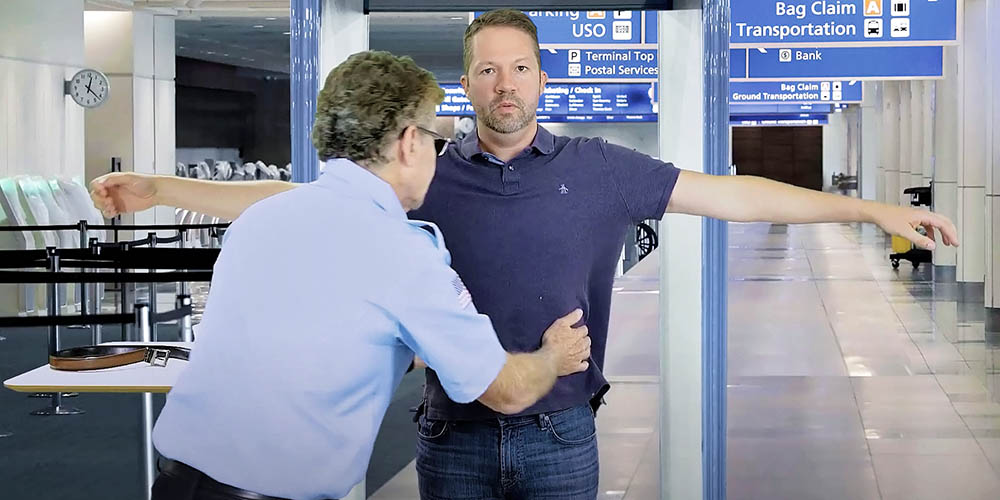
Updated June 17, 2025
- Preparation is key when traveling with diabetes. Bring at least twice the amount of medications and supplies you think you’ll need for your trip, and pack them in your carry-on (if you can) when flying.
- Notify TSA agents about your devices if they are on your body, like an insulin pump or sensor. You can always request a hand inspection if you want – I typically ask for a female TSA agent to search me!
- Most devices can safely go through X-ray and scanner machines. TSA agents are extremely knowledgeable about CGM sensors and pumps, unlike the old days.
- Eating new foods, changing time zones, being off your usual routine, and engaging in different activities can all impact blood sugar. This is why you have to pay a little more attention to your glucose values and insulin doses. You do not want to ruin your vacation over an ER visit or hospitalization.
- Talk to a knowledgeable provider like an endocrinologist or a diabuddy who travels a lot before you travel if you have questions or concerns. Know how to access medical care and or supplies from a pharmacy at your destination in case you need it.
Reading Time: 7 minutes
Traveling with diabetes requires extra planning, but you shouldn’t let it stop you from getting out there and seeing the world. While managing diabetes on the road can sometimes feel like Murphy’s Law in action – anything that can go wrong might go wrong – a little pre-trip prep can make all the difference.
Whether you’re going on a weekend getaway or an extended trip overseas, these tips will help your travels go as smoothly as possible.
As Dr. Edelman always says, “If you want to really enjoy your vacation…Don’t leave your diabetes at home!”
1. Over Prepare, Over Prepare, Over Prepare (We Really Mean It – Over Prepare!)
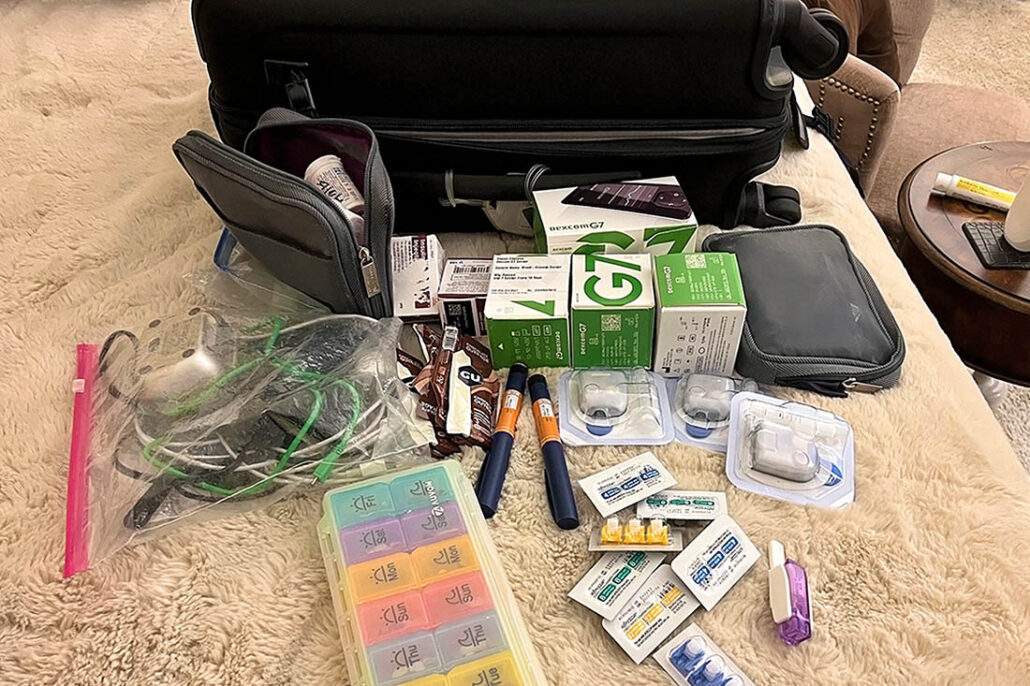
If you take only one thing from this article it should be this: when it comes to traveling with diabetes, overpreparation is the best rule of thumb. You really should pack at least twice the amount of medications and diabetes supplies you think you’ll need, and three times the amount is often ideal. You’ll probably come home with the extras, but the time you don’t have them is when you’ll really need them!
2. Pack Medications and Supplies in Your Carry-On
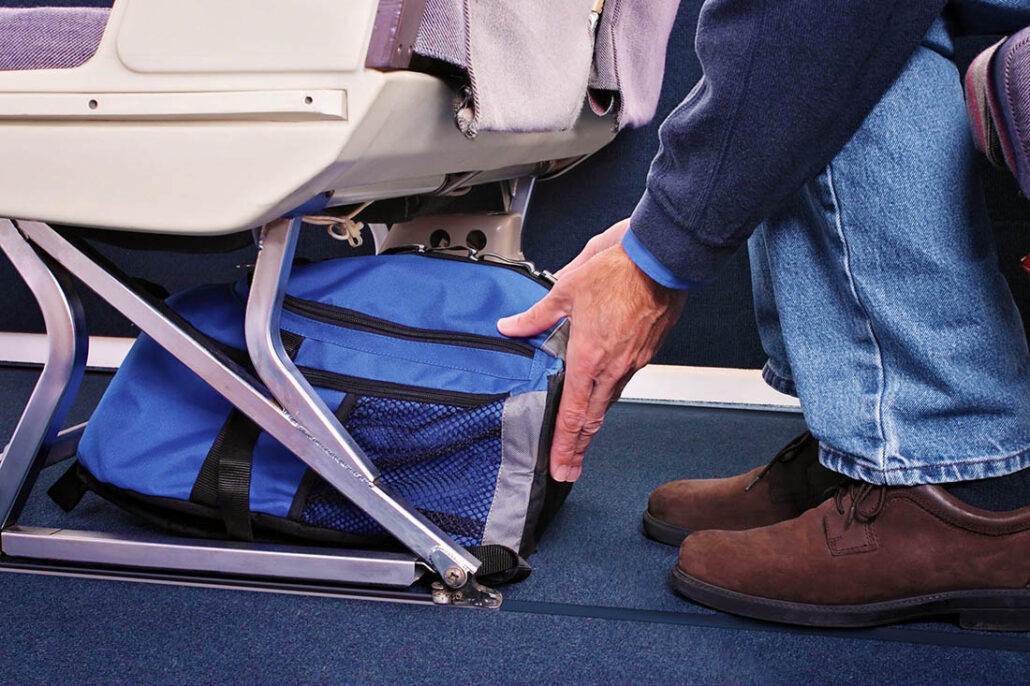
If you’re traveling by plane, put at least one set of your diabetes supplies, medications, and simple sugars in your carry-on. Keep simple sugars close by to treat lows – under the seat in front of you instead of in the overhead bin – so you have easy access if you need it. You can put your extra sets of diabetes supplies in your checked baggage if room in your carry-on is tight.
3. Make a List and Check It Twice
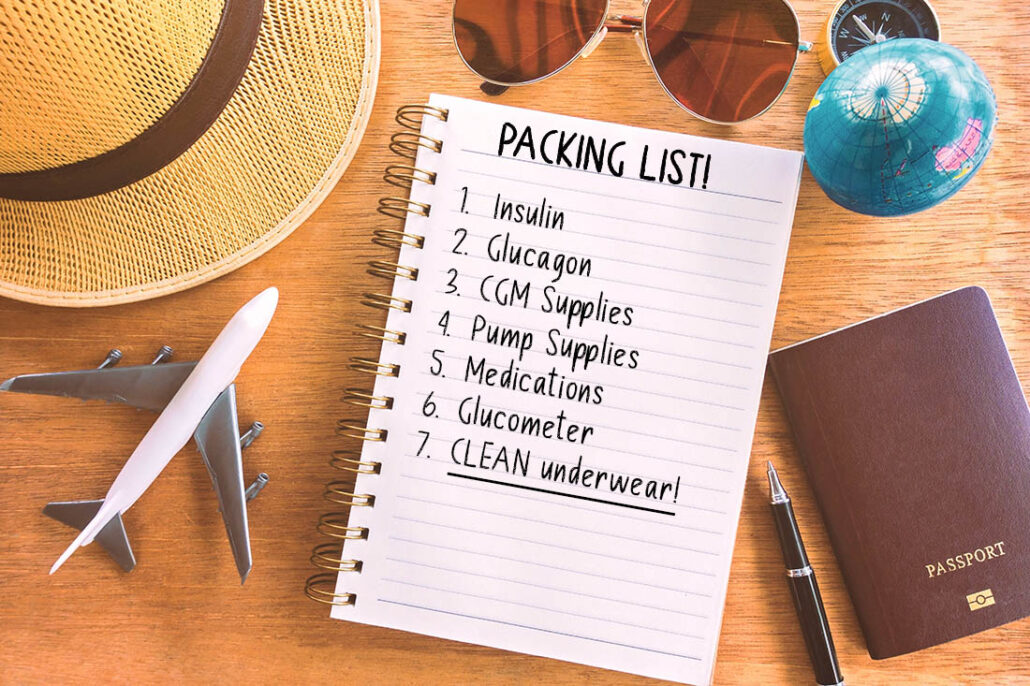
Prepare a diabetes travel packing list in advance so it’s ready when you need it. Here’s a sample list you can use as a starting point:
- Insulin, Emergency Glucagon, and Other Medications
Make sure you take enough of your medications, insulin (short and long-acting), and syringes. Check expiration dates and keep pharmacy labels on medication bottles. Take emergency glucagon (such as Gvoke and BAQSIMI) and make sure your travel companions know where it is and how to use it. - CGMs, Glucometers, and Testing Supplies
Bring two types of blood glucose monitoring devices (yes, two!) with extra batteries and strips. Even if you’re on a CGM, pack a backup meter with lancets, test strips, and alcohol swabs. - Insulin Pump and Supplies
In addition to your insulin pump and supplies, bring short and long-acting insulin pens with extra pen needles and syringes in case your pump fails. A lot of people on pumps go to multiple daily injections or the “untethered regimen” to have a little more freedom while on vacation. Many folks will try to get an extra pump, which can be difficult. Not an issue with the folks who use Omnipods. - Device Cords, Cables, & Backup Batteries
Don’t forget to bring all your device cords, cables, and batteries. A rechargeable battery can really come in handy (if it has a lithium battery it must be packed in your carry-on). - Snacks and Simple Sugars
Bring complex carbs for snacks (granola bars, cheese crackers, trail mix, etc.) as well as low-carb snacks like nuts, beef sticks, protein bars, etc., and simple sugars to treat lows (glucose tabs, jelly beans, GU packets, etc) - First Aid Kit
Pack a small first aid kit that includes pain relievers, cold medicines, sterile gauze, tape, sunscreen, insect repellant, and medications for vomiting and diarrhea. - Diabetes Identification
Some people feel more at ease wearing a medical alert bracelet or necklace when traveling with diabetes.
- Insulin, Emergency Glucagon, and Other Medications
4. Get a Leg Up on Overseas Travel
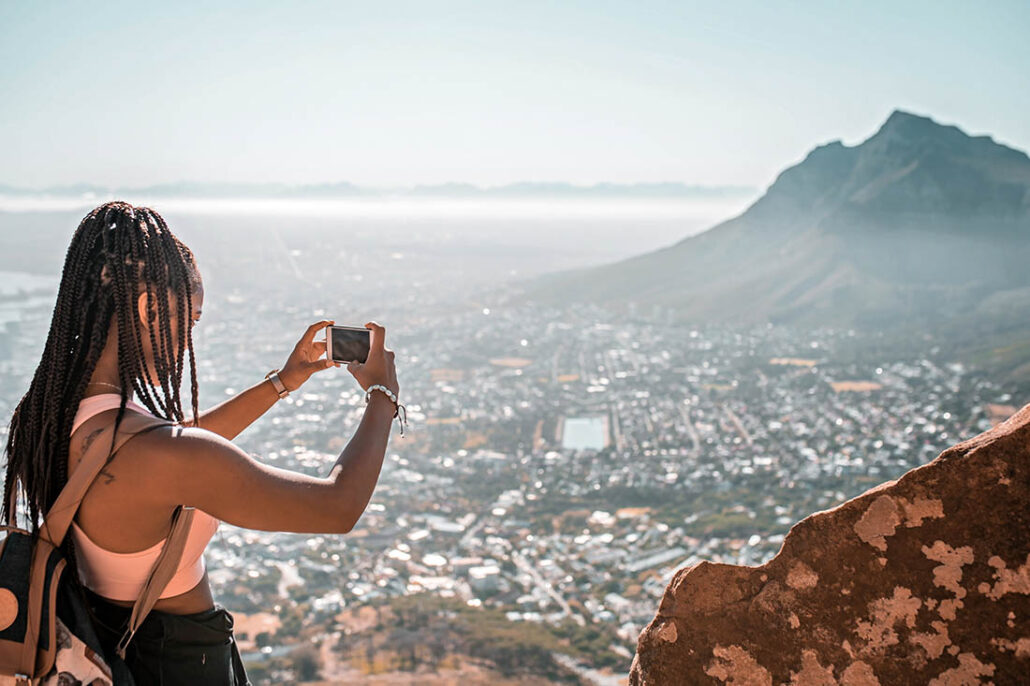
A survey of over 500 type 1 diabetes participants revealed that nearly 10% avoided international travel because of problems related to diabetes management.
Here are some additional tips for traveling internationally with diabetes:
- If you’re going to a developing country, go to a travel clinic several months in advance because you’ll likely need vaccines.
- Consider getting travel insurance with coverage for acute onset of pre-existing conditions. You don’t need travel insurance in the U.S., but it’s helpful if you are overseas.
- Keep a list with your doctor’s contact info and all your medications.
- You can find English-speaking physicians abroad through the International Association for Medical Assistance to Travelers.
- Learn to say “I have diabetes” or “I need some sugar” in the language of your destination. Also learn how to say “I would like another drink!”
- Learn how to get medical assistance in an emergency. Major hotels usually have access to English-speaking doctors. Many credit card companies can provide you with the names of English-speaking doctors. Call the U.S. embassy or the consulate for additional listings.
- Draft a letter for your doctor to sign stating that you have diabetes and need to carry insulin, syringes, a glucose meter, a CGM, an insulin pump, and/or other medications and supplies. I have traveled to Spain, Italy, Portugal, Greece, and London in the last few years and NEVER needed a letter. I did bring a letter to the Middle East in Arabic, and that was helpful. Here’s a sample travel letter you can type up and give to your caregiver to sign.
- Bring extra prescriptions in case you need to get a medication filled in a different country. This is where a letter from your doctor is helpful.
- Each country has slightly different airport security regulations, so review airport travel policies for the countries you’ll visit.
5. Stress Less at Airport Security
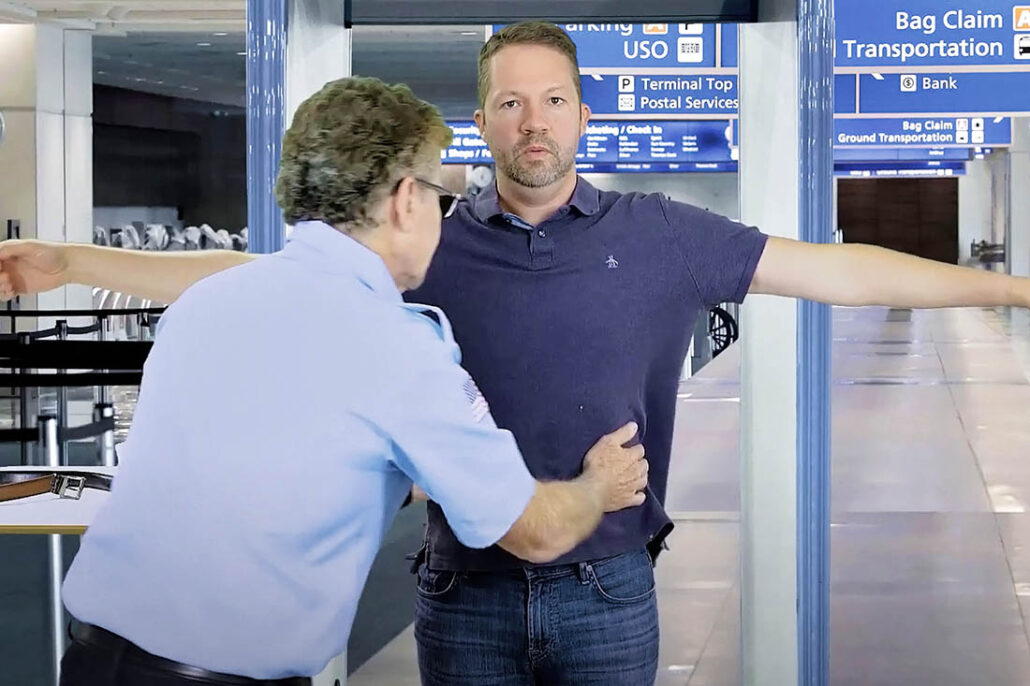
Before you go through airport security, notify the TSA agent that you have diabetes and are wearing devices and carrying medical supplies, especially if you are flying with insulin and needles.
It should not be a problem for your CGM or pump to go through screening on the conveyor belt, in the walk-through metal detector, or in the stand-up scanner. If you’re a traditional pump user and you have a pump holder with a metal clip, it will need to be removed to go through the walk-through metal detector.
If you’re concerned about any of your devices going through any of the security screening systems, ask the TSA agent for an opt-out. They can do a pat-down (woohoo!), hand-inspect your pump, and/or swab your hands.
TSA allows larger amounts of medically necessary liquids (like juice and gel packs) in reasonable quantities for your flight, but you must declare them to TSA officers at security. Scanners and X-ray machines do NOT affect insulin or medications, and carrying insulin on a plane is not a problem.
6. Remember that Pressure Changes Can Affect Insulin Pump Delivery

A recent study revealed that altitude changes during flights may affect blood sugar levels of people with diabetes on insulin pump therapy.
During takeoff, a drop in cabin pressure can cause air bubbles to form in an insulin pump cartridge, which can cause a small amount of extra insulin to be delivered.
During descent, air bubbles dissolve which can pull small amounts of insulin back into the pump. This may lead to blood sugar being higher than usual. This issue doesn’t always happen, but it’s something to be aware of. A preventative strategy is to make sure there are little or no bubbles in your insulin reservoir when filling it up.
7. If You Aren’t on a CGM, Test, Test, Test!
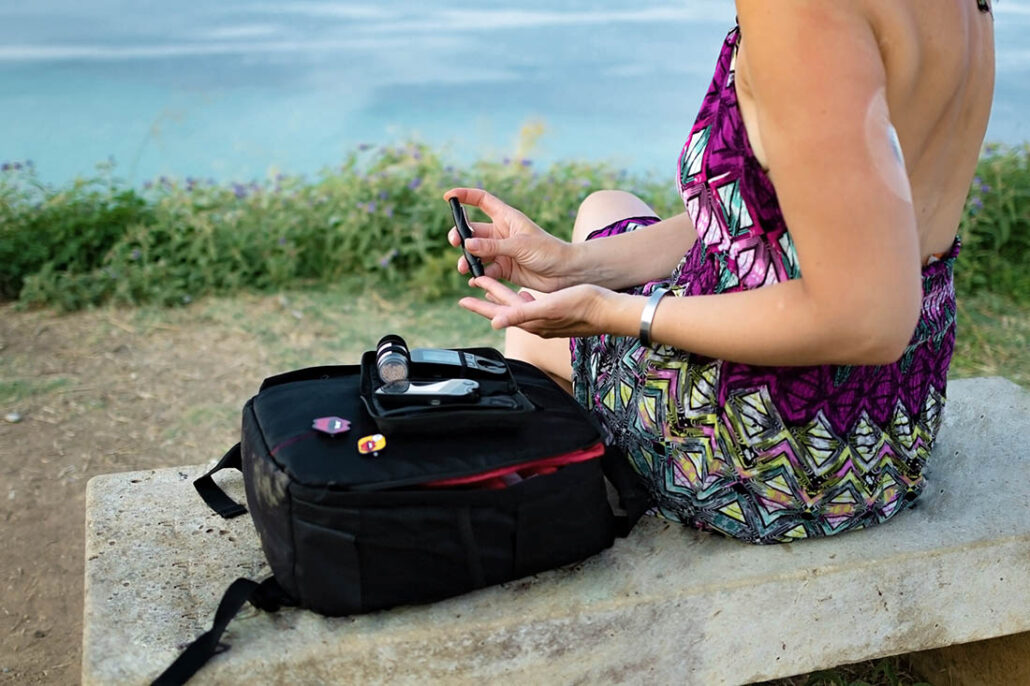
If you don’t have a CGM, test your blood sugar – a lot! Many people don’t feel like testing when they’re traveling, but this is the time to test more. You’re eating different foods, you’re in different time zones, and you’re often experiencing different levels of exercise.
8. Don’t Forget to Pack Common Sense
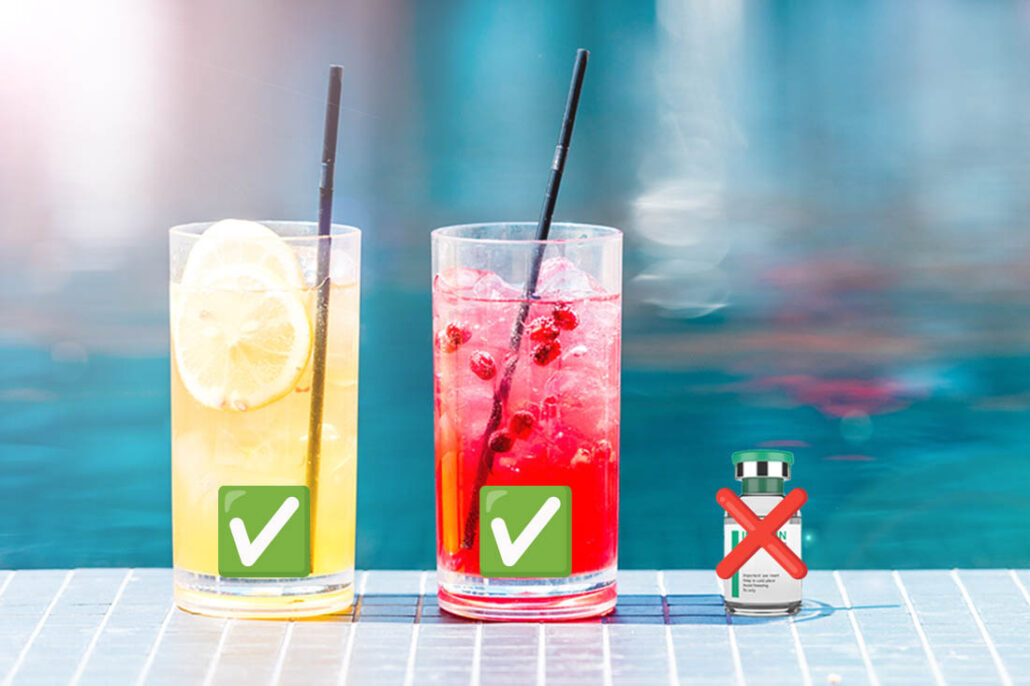
If you’re going on a trip with a lot of activity, use common sense. Bring lots of water, fast-acting carbs, sunscreen (getting burned can mess up your diabetes – and your vacation!) a compact first aid kit, and remember to protect your insulin. If your insulin is in the hot sun you’ll denature it.
9. Be Careful Using Airport USBs and Free Wifi
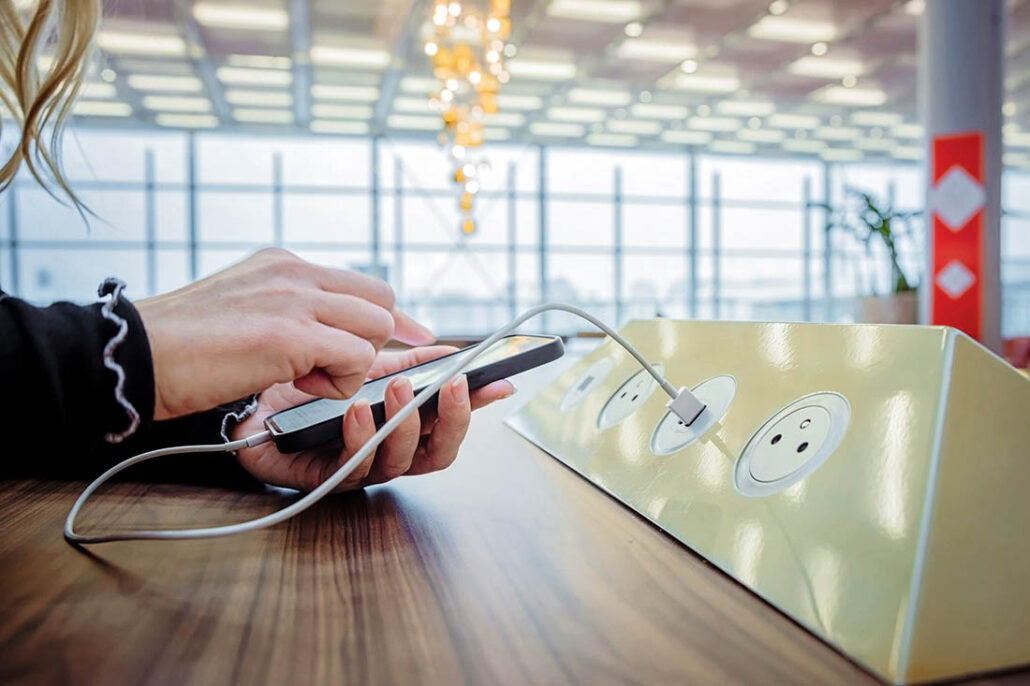
The TSA is warning passengers not to plug cell phones or devices directly into a USB port while inside an airport, due to a cyber-theft scam called “juice/port jacking.” Instead of using a public USB charging port, TSA recommends you use a TSA-compliant power brick or battery pack and plug devices in through that. Using the airport’s free Wi-Fi can also carry cybersecurity risks.
10. Check the Needle Tip on Older Insulin Pens
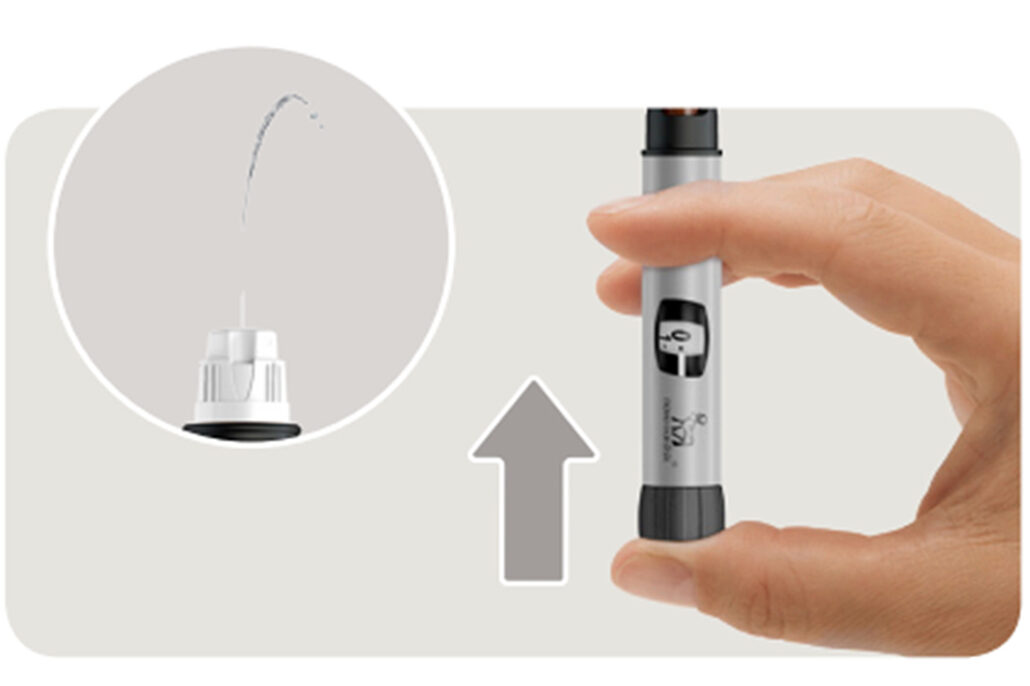
If you have an insulin pen that’s been sitting in your refrigerator for a while and you’re planning on taking it on a trip as a backup, waste a few units of insulin and test the needle tip to make sure it’s not clogged. If you don’t use an insulin pen for a while, it can sometimes get clogged up.
Traveling with Diabetes: Important FAQs
❄️ How do you keep insulin cold while traveling?
You can safely store insulin bottles at room temperature (59°F to 86°F or 15°C to 30°C) for up to 28 days, and you can find lots of insulin travel packs available online if you do need to keep it cool. Don’t leave insulin by the pool, in direct sunlight, or on the beach, and don’t store it in a car trunk or glove compartment.
⏰ How do you adjust your CGM/insulin/pump/medications for time zone changes?
Follow these suggestions when crossing time zones:
CGMs: If you get your CGM readings on your smartphone, your phone will change the time automatically when you get to your destination. If you use a reader that doesn’t have a world clock, you will need to change it manually to the local time zone when you arrive.
Basal Insulin: If you’re on shots, just keep taking your basal insulin at night because it is so long acting (especially Toujeo and Tresiba), time zone changes are less of an issue. If you’re on Lantus, be sure to check your glucose a little more frequently as you may need correction doses for the first few days.
Automated Insulin Delivery/Hybrid Closed-Loop Systems: If your pump does not have a clock that changes time automatically, manually change the clock on your pump when you arrive at your destination.
Medications: Talk to your doctor about any adjustments you should make to your medication schedule, like for Cialis (wink wink!).
🔎 What do you do if you lose your insulin while on vacation?
Life happens. If you drop or lose an insulin vial, there are a few things you can do:
- You can suck insulin out of an insulin pen with a syringe to give yourself a shot or to refill your pump. If you will be using that pen to inject later, just make sure you get all the air bubbles out before you use it.
- You can buy regular or NPH insulin at a pharmacy in the U.S. without a prescription. Most pharmacies in Europe will sell you insulin without a prescription if you plead your case.
- If you are near the drugstore chain that carries your prescription, you can transfer your prescription there and ask them to do an emergency refill.
Key Takeaways for Traveling with Diabetes
Whether you’re jetting off to Vegas for a night or spending months abroad, planning ahead will give you more freedom to enjoy your trip with less stress.
Here are the key points to keep in mind when you’re traveling with diabetes:
- Take at least twice as many medications and supplies as you think you’ll need – three times the amount is generally a good idea.
- Pack your medications and device supplies in your carry-on bag (flying with insulin is not a problem).
- Keep snacks to treat hypoglycemia where you can easily get to them, like under the seat in front of you.
- Check with your healthcare provider before you travel to see if you need to adjust your insulin or medication schedule, or if you have other concerns.
Diabetes might be part of your life, but it doesn’t have to limit your world. The more prepared you are, the more you’ll enjoy wherever you’re going.
See what Drs. E & P pack before they travel, and visit our video vault and resource library for additional tips on living well with diabetes.
If you have type 1 diabetes, put these travel tips to use for our upcoming ONE Conference and Retreat in San Diego August 8-10th!
Safe travels and enjoy the journey!


Leave a Reply